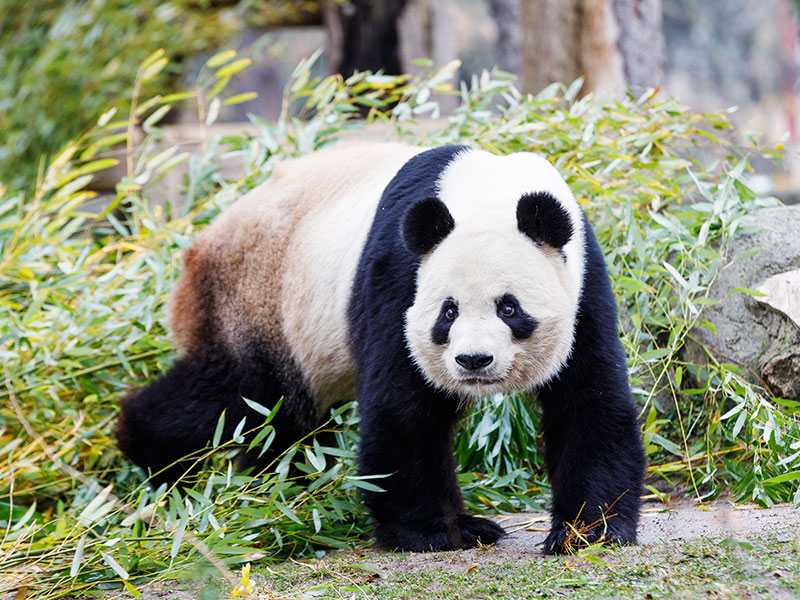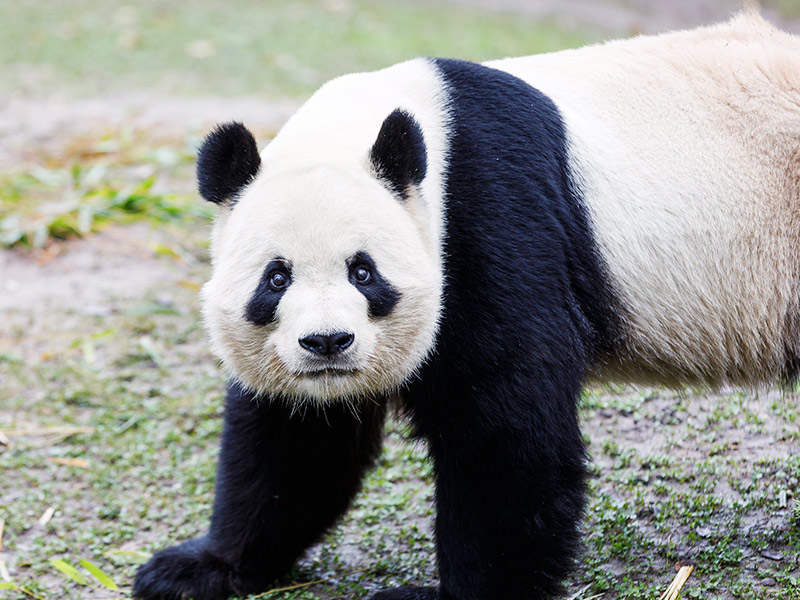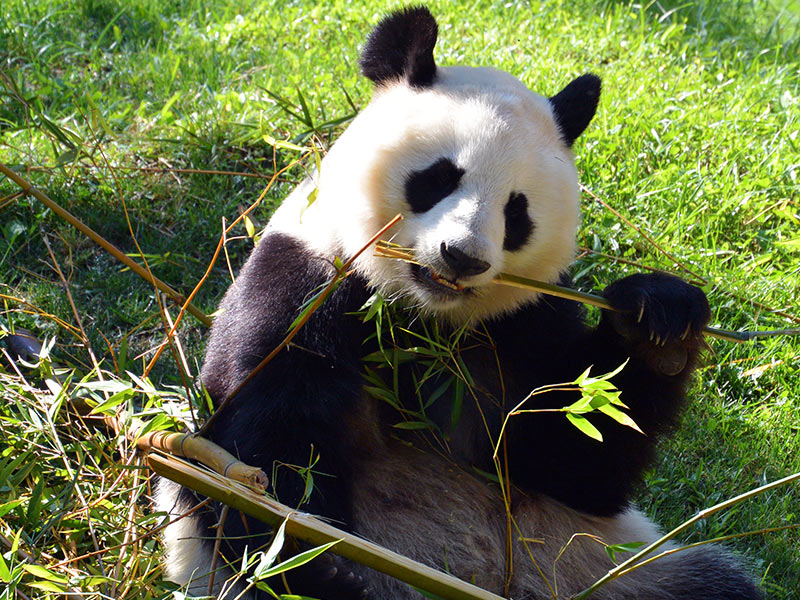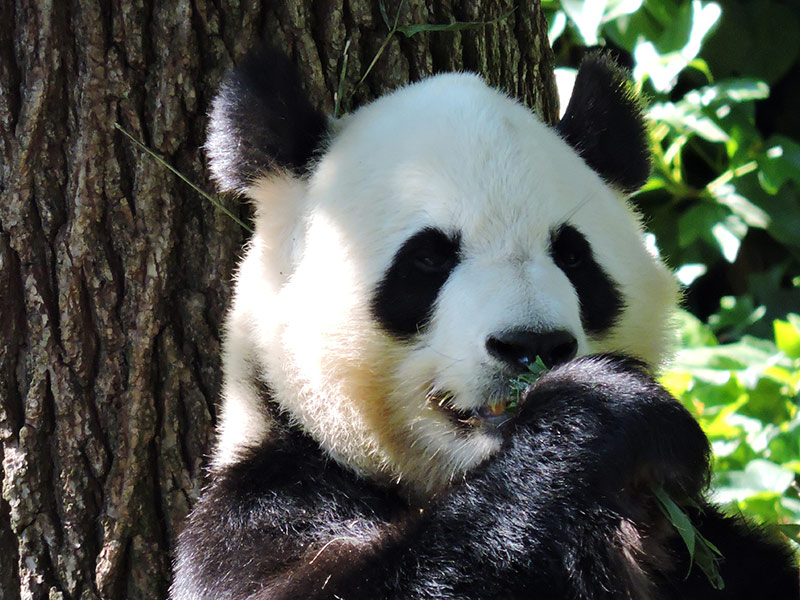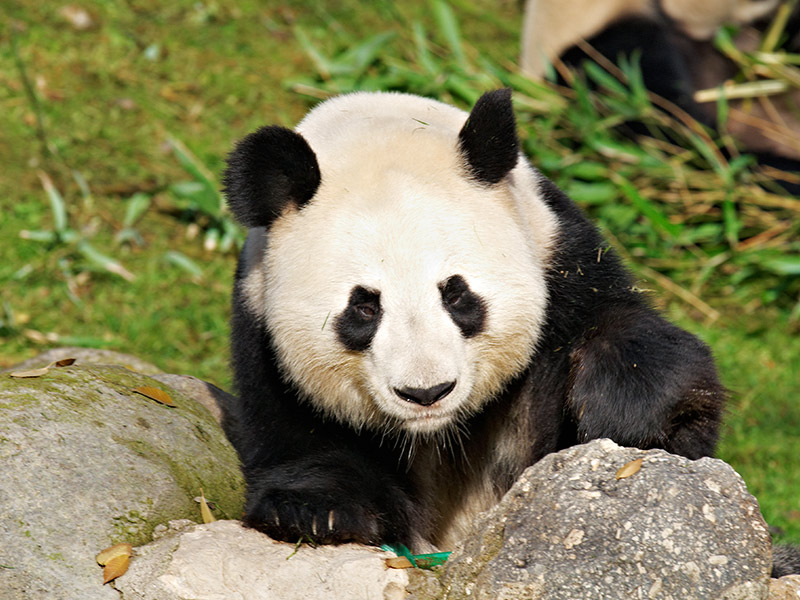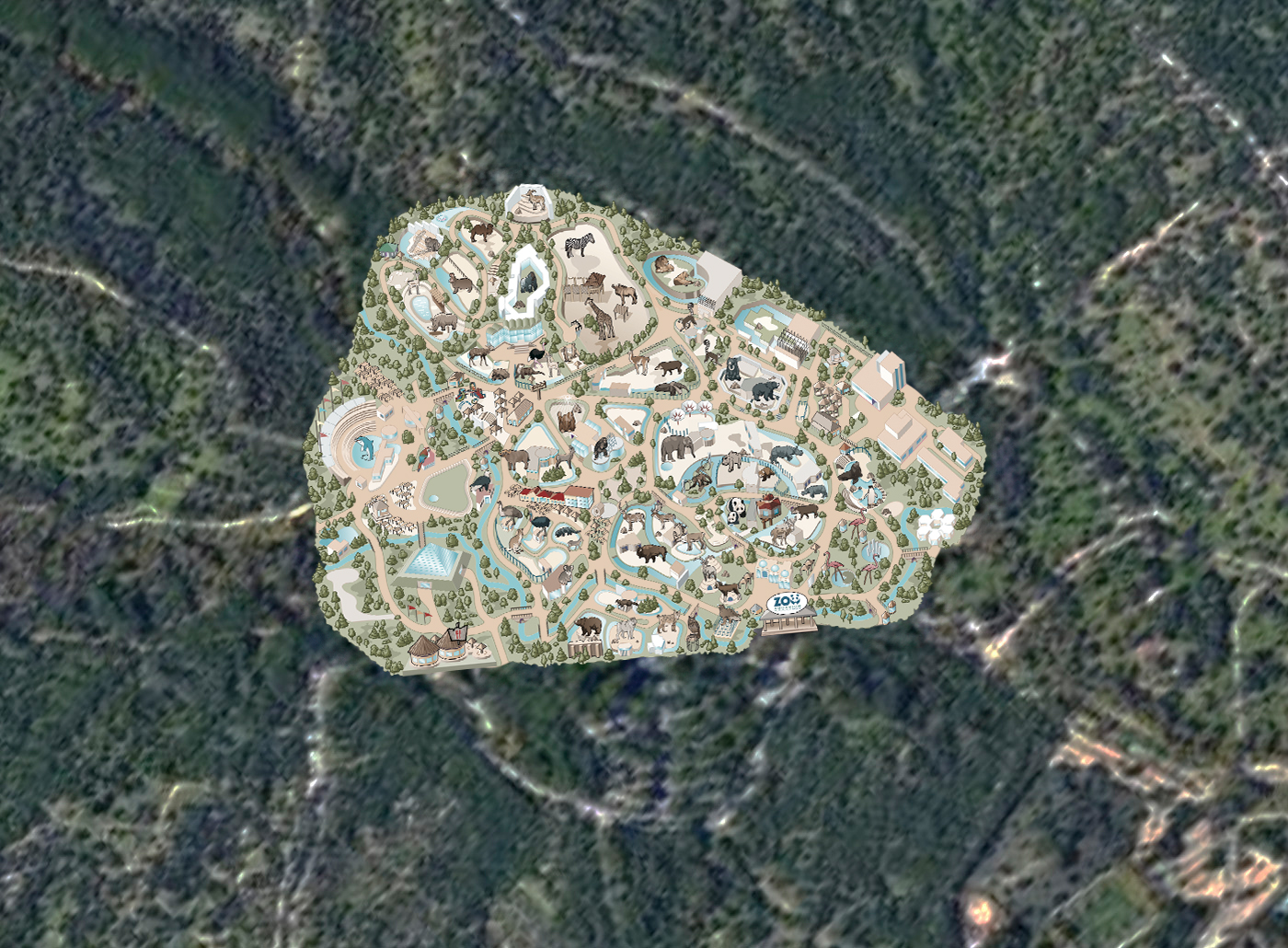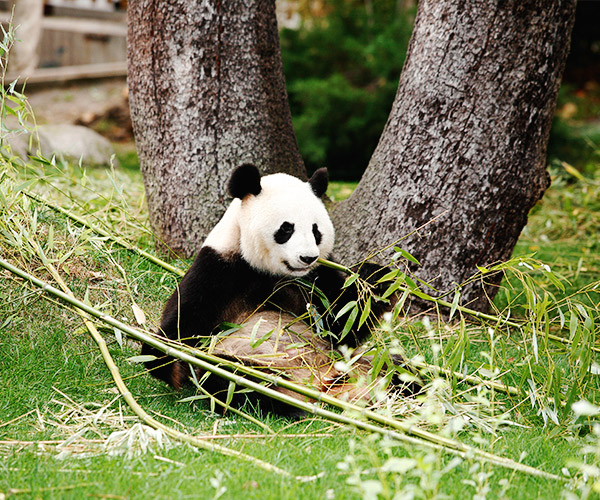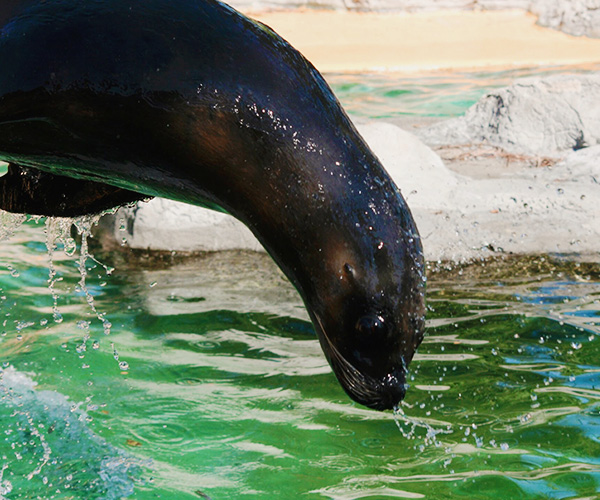Giant pandas are fascinating animals. Bamboo eaters (as the meaning of their name in Nepali indicates), they were nothing more than solitary wanderers in the Chinese mountains until 1869, when they were brought to the attention of the West by the naturalist and missionary Armand David. Giant pandas are a symbol for those who are convinced of the need to protect nature and biodiversity.
They are calm animals , expert tree climbers. Females are lighter than males, although there are no differences between them. Their fur is hard, long and dense; sometimes the black has a brownish tinge, and the white darkens or becomes more reddish and brown. It has vertical pupils, like cats. This species has developed a sixth finger (pseudo-thumb)which is nothing more than an extension of a wrist bone used to pluck, grasp and mouth bamboo.
The temperate forests in China have traditionally provided giant pandas with shelter and food. Each individual usually occupies a territory of between 4 and 6.5 kilometers, while it moves carefree and slowly, economizing its energies. Dawn and twilight are the hours when it is most active, although not always.
Males and females frequent practically identical areas, and communicate with a series of sounds. Males in particular make calls and moans during the mating season (specific and quite loud). The young are born at 135 days of gestation, blind and pink. Their diet consists mainly of bamboo; they also eat insects, eggs, fruits and small mammals.
